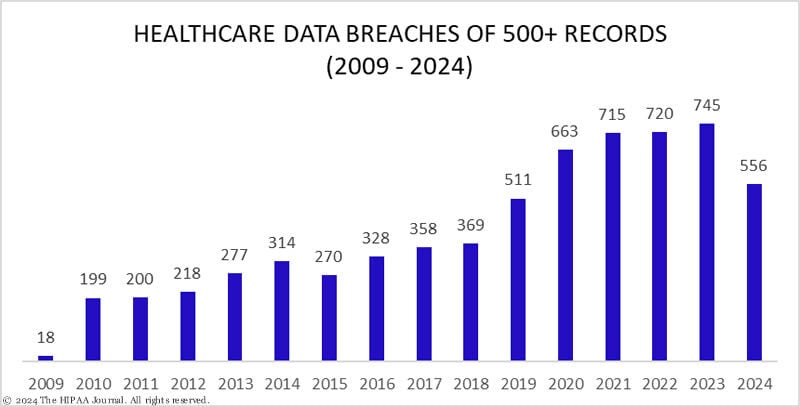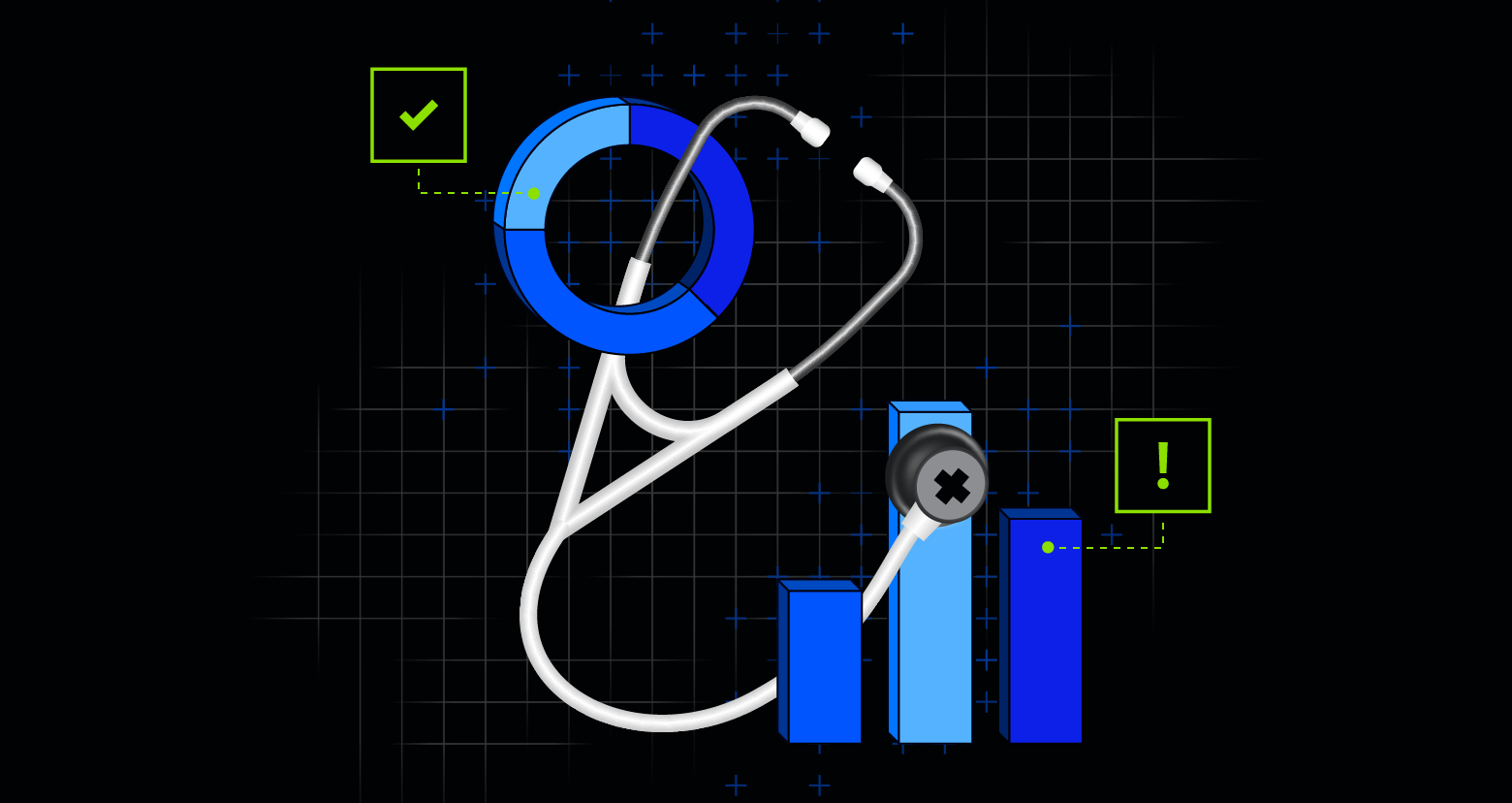As medical care increasingly relies on interconnected technology, the healthcare space — including hospitals, clinics, patients, and administration — has become even more susceptible to vulnerabilities and continues to be the most expensive industry for addressing and recovering from data breaches, a position it has maintained for over a decade.
Healthcare organizations are especially vulnerable to cyberattacks, including ransomware and data breaches, due to their vast collections of sensitive and valuable patient information. Hackers exploit a dispersed system with more endpoints, weaker security, limited resources, and outdated software.
Additionally, because hospitals need to resume operations quickly following attacks to continue patient care, they often have no choice but to pay ransom demands. This makes them a popular target for cybercriminals.
These attacks on healthcare systems have disrupted patient care and caused significant financial losses for institutions. This blog post will share the top healthcare cybersecurity statistics and offer tips to help strengthen your data security posture.
Courtesy of The HIPAA Journal; Healthcare data breaches as of October 24, 2024

Courtesy of The HIPAA Journal; Healthcare data breaches as of October 24, 2024
General cybersecurity statistics
In 2024, cybersecurity threats have continued to increase, impacting healthcare organizations of all sizes. The following general statistics emphasize the need for enhanced cybersecurity measures to safeguard sensitive healthcare data and ensure resilience.
- The UnitedHealth February 2024 cyberattack was the largest ever known breach of protected health information at a HIPAA-regulated entity, beating the previous record of 78.8 million individuals set by Anthem Inc. in 2015.
- In that attack, the PHI of at least 100 million individuals was compromised in the ransomware attack – almost one-third of the population of the United States.
- Healthcare cyberattacks affected more than 100 million people in 2023.
- In the first half of 2024, 387 data breaches involving 500 or more records were reported to the Health and Human Services’ Office for Civil Rights (OCR), representing an 8.4% increase from the first half of 2023.
- According to The HIPPA Journal, 2024 will likely be the worst-ever year for breached healthcare records by some margin.
- In the first half of 2024, there were 13 reports of data breaches involving the loss or theft of electronic devices containing ePHI and paper/records, 85.7% more breaches than this time last year.
- According to HIPAA, healthcare data breaches in the U.S. have decreased by 48%.
- More than a third (34%) of data breaches in healthcare organizations came from authorized access or disclosure.
- Ninety percent of healthcare organizations face at least one security breach, and 30% of these breaches occur in large hospitals.
- Healthcare data breaches cost an average of $408 per record, three times higher than the cross-industry average of $148 per record.
- The average cost for a breach in the industry this year was $9.8 million, a decline from 2023 when the price tag reached $10.9 million.
- At least 14 million patients in the U.S. have been affected by healthcare data breaches in 2024 so far.
- In healthcare, the average data breach costs fell by 10.6% in 2024.
- However, for the 14th year in a row, healthcare tops the list with the most expensive breach recoveries, at an average of $9.77 million.
- Internal issues such as human error and IT failures accounted for 26% and 22% of healthcare attacks, respectively, and 52% of breaches were attributed to malicious actors.
- Just 14% of healthcare organizations say their IT security teams are fully staffed. Over half say they need more help, and 30% say they are understaffed or severely understaffed.
- Forty-one percent of healthcare IT professionals believe their organizations allocate insufficient financial resources to make their cybersecurity strategy effective.
- Breached healthcare information is up to 50 times more valuable than financial information.
- Ninety-two percent of organizations experienced a cyberattack in the past 12 months — up from 88% in 2023.
- Cybersecurity Ventures predicts that the healthcare industry will spend over $125 billion on cybersecurity products and services from 2020 to 2025.
- The total spending on healthcare will rise to $5.61 billion by 2025 through the integration of blockchain technology.
Top healthcare data breaches by records
IT Incident
IT Incident
IT Incident
Disclosure
IT Incident
IT Incident
IT Incident
IT Incident
IT Incident
IT Incident
Courtesy of The HIPAA Journal; Top 10 healthcare data breaches by records as of October 24, 2024
Ransomware and phishing cybersecurity statistics
Ransomware and phishing attacks remain significant concerns for healthcare organizations, resulting in substantial financial and operational impacts worldwide.
- Thirty-six percent of healthcare facilities reported increased medical complications due to ransomware attacks.
- More than three-fourths (74%) of ransomware attacks were aimed at hospitals and 26% at secondary institutions like dental services and nursing homes.
- In 2024, 88% of healthcare workers opened phishing emails.
- More than 90% of all cyberattacks against healthcare industries are phishing scams.
Third-party breach statistics
As healthcare companies increasingly depend on an expanding network of vendors and partners, vulnerabilities within third-party organizations have resulted in considerable data exposure and financial losses.
- Fifty-eight percent of the 77.3 million individuals affected by data breaches in 2023 were due to an attack on a healthcare third-party provider — a 287% increase compared to 2022.
- Healthcare is the industry worst affected by this, with the highest volume of third-party breaches, followed by financial services.
- More than 28% of all breaches occurred at healthcare organizations, with 35% of all reported healthcare data breaches occurring at third-party vendors.
Regulation changes and updates
Cybersecurity regulations are tightening as governments worldwide respond to escalating digital threats. New laws now require stricter protection measures and faster breach notifications, pushing organizations to prioritize compliance and risk management.
- Earlier this year, the European Parliament and Council agreed to regulate the use of AI in the EU by passing the European Union Artificial Intelligence Act (EU AI Act), the world’s first comprehensive AI regulation. Non-compliance with certain provisions can result in fines of up to $38 million or up to 7% of your gross revenue.
- Hospitals and other healthcare organizations receiving Medicaid or Medicare reimbursements would be subject to new security requirements under a federal rule expected to be proposed shortly.
- The Australian government will pilot a network to share information on cyber threats within the healthcare sector. The government set aside around $4.2 million to create an information and analysis center for the country’s healthcare system.
- Proposed new legislation would give hacked healthcare providers quicker payments if they meet baseline cybersecurity standards. Under the bill, if an intermediary of a healthcare provider were hacked, the intermediary would also be required to meet cyber standards to receive accelerated payments.
- The Biden administration requested $800 million in funding in its proposed budget for 2025 to help provide resources to hospitals that need to improve their cybersecurity.
.png?width=2000&height=2000&name=Untitled%20design%20(1).png)
Insurance carrier and policy statistics
Insurance companies face significant cyber threats due to the large volumes of customer data they manage. This underscores the importance of robust data security measures in the insurance industry to ensure trust amid increasing threats.
- Landmark Admin, an insurance carrier administrator, said personal data from more than 800,000 people was exposed when hackers infiltrated its systems between May and June.
- Star Health, India’s biggest health insurer, said a hacker demanded $68,000 after a leak of customer data and medical records.
- Healthcare companies that used AI and automation tools could detect and contain incidents 98 days faster than average.
- In addition, companies using these solutions saved an average of nearly $1 million.
- Only 47% of healthcare facilities reported their ransom payment being covered by their cybersecurity insurance policy.
Don’t wait for a breach to occur.
Prioritizing cybersecurity within an organization is essential across all industries. Combining thorough training with a comprehensive Data Security Platform provides a solid cybersecurity solution.
Additionally, implementing multifactor authentication, restricting organization-wide sharing links, and conducting routine updates will enhance security measures.
Discover how a robust data security solution can support you by exploring more resources on our blog.
What should I do now?
Below are three ways you can continue your journey to reduce data risk at your company:
Schedule a demo with us to see Varonis in action. We'll personalize the session to your org's data security needs and answer any questions.
See a sample of our Data Risk Assessment and learn the risks that could be lingering in your environment. Varonis' DRA is completely free and offers a clear path to automated remediation.
Follow us on LinkedIn, YouTube, and X (Twitter) for bite-sized insights on all things data security, including DSPM, threat detection, AI security, and more.









